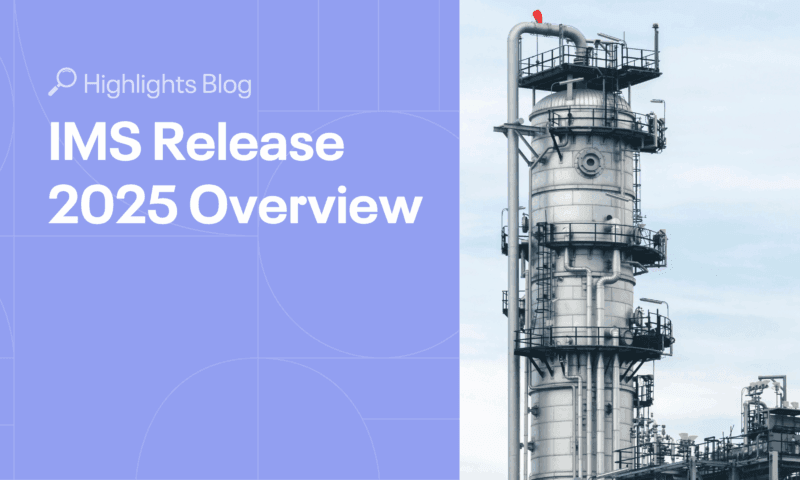In high-risk industries like oil and gas, manufacturing, or power generation, preventing equipment failures is critical to ensuring safety, compliance, and efficiency. Failure Modes and Effects Analysis (FMEA) has long been a trusted method for identifying potential risks, assessing their impact, and prioritizing mitigation strategies. However, the way FMEA is implemented is evolving. The future lies in integrated FMEA tools that connect seamlessly with broader reliability and risk management systems, transforming isolated studies into collaborative, actionable processes.
Limitations of Traditional FMEA Software
Historically, FMEA was conducted using spreadsheets or standalone software, often by engineers working in isolation. These tools produced static risk assessments – detailed at the time but quickly outdated as equipment or conditions changed. This siloed approach created several challenges:
- Manual Data Entry: Teams spent hours duplicating data across platforms, leading to errors and inconsistencies.
- Limited Accessibility: Risk data was often locked in spreadsheets, making it difficult for other departments to access or act on.
- Disconnected Insights: Failure modes weren’t associated with maintenance or operational data, reducing their practical value.
- Poor Traceability: Linking FMEA findings to specific mitigation actions, such as maintenance tasks or safety measures, was time-consuming.
These gaps made it hard for organizations to stay proactive, often missing chances to address emerging risks or align teams effectively.
What It Means to Integrate FMEA
An integrated FMEA doesn’t live on an island, it lives at the heart of your reliability and asset integrity strategy. FMEA is no longer just a one-time report filed away in a project folder. In modern risk management, it’s becoming a living, dynamic process.
Integration ensures that FMEA results are directly connected to actual equipment records, creating a seamless link between analysis and operations. Failure modes automatically inform maintenance strategies and Safety Instrumented Function (SIF) design, enhancing both reliability and safety.
Here’s how it works:
- Centralized Data: FMEA is accessible in the same system housing equipment records, inspection histories, and operational data, making it easier to keep risk assessments relevant.
- Streamlined Workflows: Failure modes can be directly linked to safety measures like Safety Instrumented Functions (SIFs) or Reliability-Centered Maintenance (RCM) strategies.
- Collaborative Access: Maintenance, safety, and engineering teams share a unified view of risks, improving alignment and decision-making.
- Manual Updates with Ease: While FMEA updates require manual input, all of the necessary data is readily available in the system, simplifying the process.
This approach transforms FMEA into a practical tool that supports everyday reliability and safety decisions across multiple disciplines, including SIF and RCM.
The Benefits of Integration
When FMEA is integrated into a broader operational system, it becomes a powerful driver of smarter, faster, and more effective risk management. Key benefits include:
- Accessible and Accurate Data: All relevant data for updating FMEA is centralized, making updates faster and more accurate. Integrated systems eliminate the need for duplication of data across multiple systems, reducing errors and version control issues.
- Clear Traceability: Failure modes are easily linked to RCM strategies and SIF designs, ensuring actionable outcomes.
- Unified Decision-Making: Teams across departments work from the same risk data, fostering collaboration and reducing miscommunication.
- Actionable Outcomes: FMEA findings provide insights on the critical processes that can cause failures and downtime, allowing organizations to implement effective inspection and maintenance strategies, driving tangible results.
For instance, consider potential changes to a processing unit at an existing refinery. An asset integrity management solution which integrates FMEA allows engineers to access recent inspection data, understand which components are critical to the safety and reliability of a process, develop inspection and maintenance strategies – all without switching tools. This streamlined process saves time and helps prevent costly downtime.
The Future Is Integrated
FMEA remains an essential tool for identifying and managing risk, but its future lies in integration. Static spreadsheets and isolated studies can’t keep up with the demands of modern industries. By embedding FMEA into a connected system like Cenosco’s IMS, organizations can move from reactive fixes to proactive, collaborative reliability.
Ready to evolve your FMEA approach?
Discover how Cenosco IMS transforms risk management with integrated tools designed for the full asset lifecycle.




